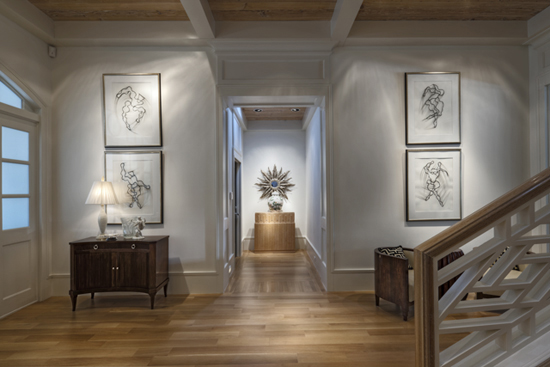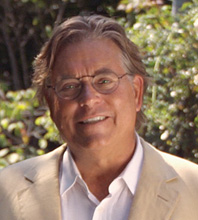The Vienna Secessionists Influenced 21st Century Design of Rick Janecek
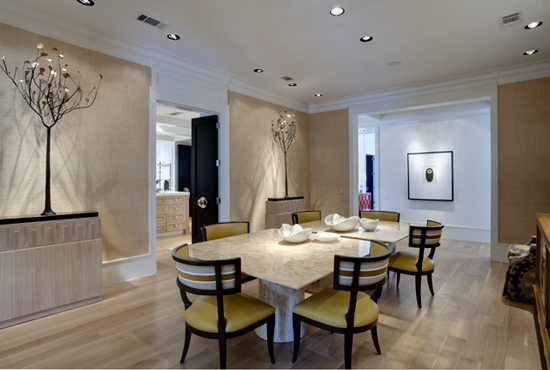
Modern design is rooted in the 150 year old family tree of interconnecting and competing branches of modern art, architecture and design.
The Neue Galerie’s current exhibition Vienna 1900: Style and Identity clearly shows the competing spirit of the Vienna modernists who were the European catalyst of the modern movement in Europe in the 1900s. Architect Adolf Loos, who worked with Louis Sullivan in Chicago, adamantly argued for function to determine form. Loos rejected any artistic element that might prey on consumer instincts. The Vienna Secessionists, led by Josef Hoffman and Koloman Moser and Dagobert Peche, were actively redefining artistic surfaces as an integral part of the structure. Both sides rejected historocity and the old order, but Loos considered himself a far purer modernist as he advocated a conservative form that allowed the person to evolve and adapt to a new modern space.
Josef Hoffman Side of Room |
Adolf Loos Side of Room |
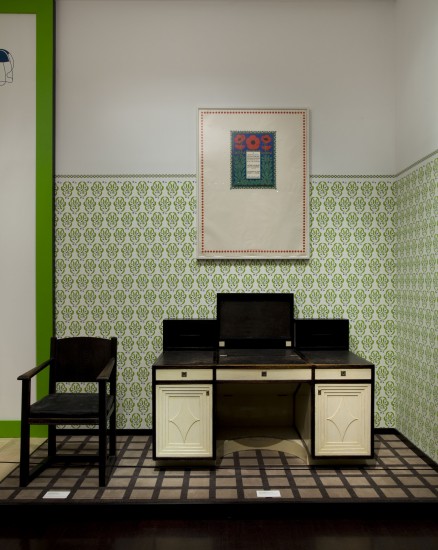 Josef Hoffman side of room Image courtesy of Neue Galerie New York | 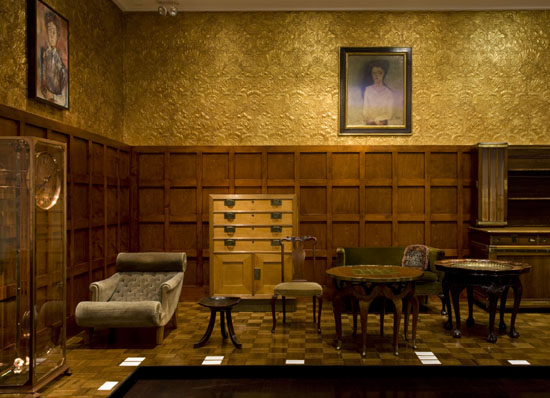 Adolf Loos side of the room. Image courtesy of Neue Galerie New York |
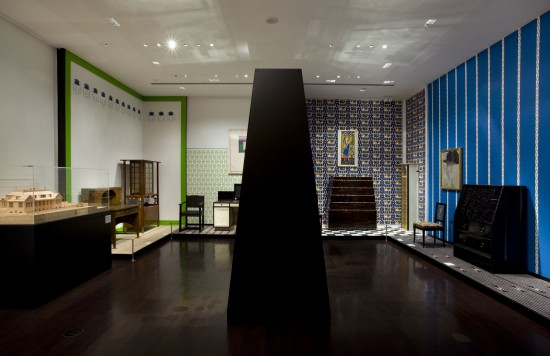 Image courtesy of Neue Galerie New York |
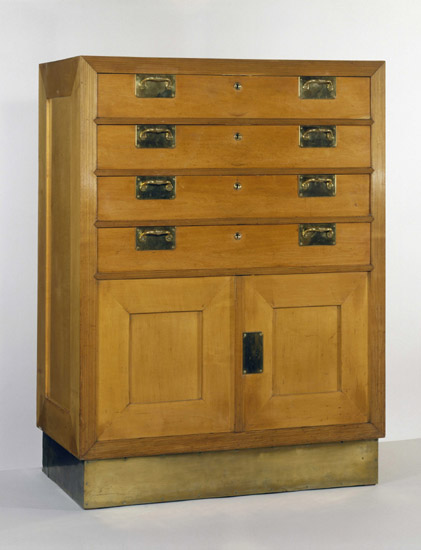 Adolf Loos (1870-1933) Chest of drawers from the apartment of Gustav and Marie Turnovsky, Vienna 1902 Photograph © Victoria and Albert Museum, London Image courtesy of Neue Galerie New York |
Can a Decorative Expression Be More Modern Than a Modernist Expression Adhering Strictly to Function?
One room of the Vienna 1900 exhibit was organized to contrast the differing opinions and approach between Adolf Loos and the Secessionists Hoffman and Moser. The Loos side of the room was simple and spare but it looked stale as the accepted style of the time, Chippendale, dominated the space.
On the Vienna Secessionist side of the room, sleek curvilinear lines of Chippendale were replaced by the bold straight lines and dramatic stacked geometric shapes that foreshadowed Art Deco that came three decades later. On this side of the room, the integration of surfaces and details into the structural component dazzle and provoke one’s modernist imagination. It shows a designer can be decorative and be modern.

Image courtesy of Neue Galerie New York
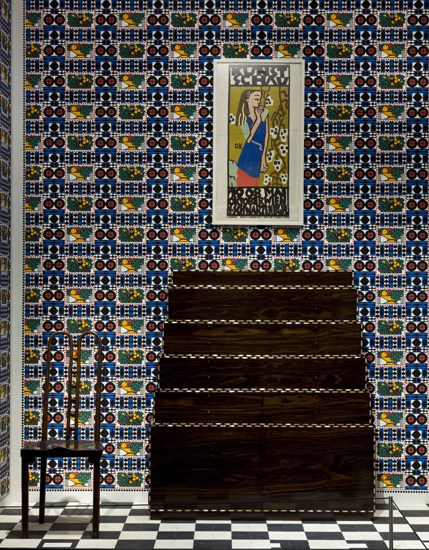
Image courtesy of Neue Galerie New York
The Demand for Modern Homes Grows

There is increasing interest and demand for modern architecture. The movement toward modern architecture that comes from many places is fueled by a diverse demographic and is heading in many directions.
Younger buyers often prefer midcentury modern or modern homes. Other home buyers, having raised their children in a traditional Tudor home, are now opting for a modern glass box, a contemporary town house or a modern highrise condominium. Even those who like classic Highland Park homes are often asking interior designers to select modern and contemporary furniture for those homes.
Designer Rick Janecek Draws on Texas Modern, Midcentury Modern and Classic Architecture for Modern Style in 21st Century
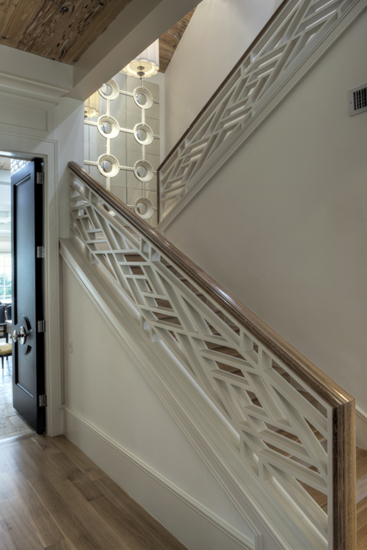
Rick Janecek is a designer who believes modern is a style, not a time period, an approach rather than a template. He emphasizes exacting classic proportions, honest materials, and an artistic expression of surfaces integrated into the structure. Mixing architectural precedents with modern design, he creates well defined spaces that are open, well-lit and pleasingly simple. Rick Janecek is an admirer of the Vienna Secessionists who further fueled European modernists. He is also an admirer of architects David Williams and O’Neil Ford who created the Texas Modern Style that combines the modernism of Europe with the indigenous qualities of Texas. Rick Janecek uses pecky cypress in the hall and entry in this Dallas estate home, sympathetic to the signature wood ceilings seen in homes designed by David Williams and O’Neil Ford.
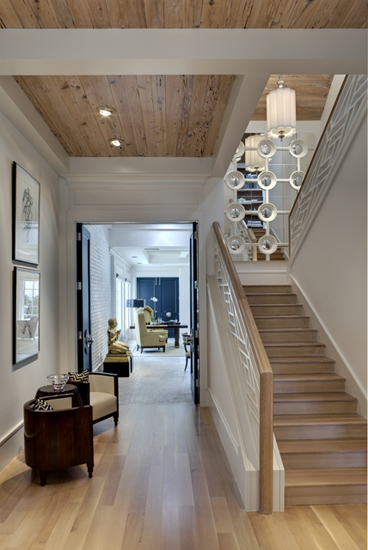
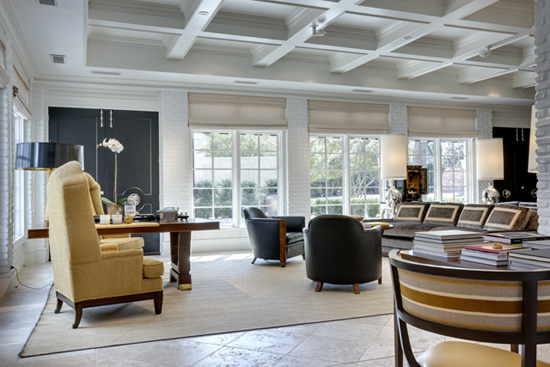
He carefully uses architectural elements that add ornamentation that is honest and not superfluous. The columns, ceiling beams and exposed brick add detail and texture as they also serve as authentic structural components. Like O’Neil Ford who designed light fixtures and staircases that his brother Hobbs Ford hand forged or carved, Rick Janecek designed the light fixtures and staircases that he had built specifically for this home. The stair rail and balustrades pull from the Art Deco of the 1930s as well as the modern look of the 1960s. The wide plank rift-cut oak floors are associated with a progressive art gallery and the museum finish walls with, well, a museum. Extensive art lighting allows art to become a priority. The large open kitchen with stainless steel and honed white Vermont Danby marble is a modern application of modern utility.
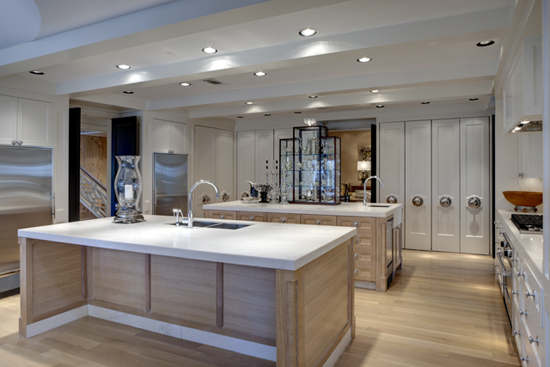
Modern Design Draws from Classic Lines and Detail
A sense of liberation comes when one enters this home. Rick Janecek does not run from historical precedents, nor is he restricted by traditional design. He simplifies, streamlines, and even exaggerates classic design to create a modern style.
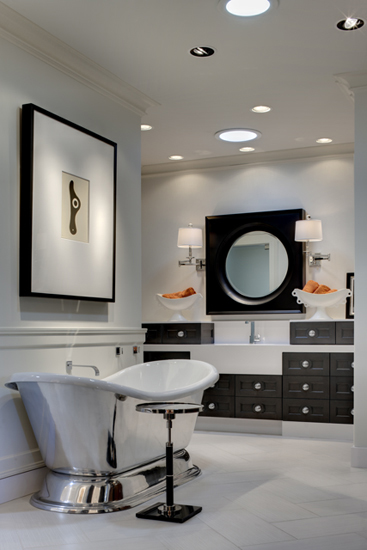
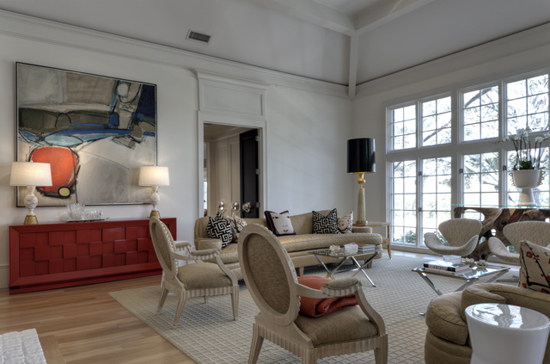
Each room is designed to look graceful with nothing in it, a backdrop for a collection of art and furniture. On a backdrop of custom milled tall doors void of any ornamentation or molding are over-scaled polished nickel door pulls inspired by 19th century furniture knobs. In a clean, well-lighted architectural space, furniture or art from any period look like museum pieces.
Modern is a Style, Not a Time Period
Rick Janecek’s modern reinterpretation of this 7,000 square foot traditional home, set on an acre of land, is successful because of his understanding that modern as a style reinterprets the familiar. The context of modern is rooted in the time period but is timeless in this approach.
Nineteenth century modernist Claude Monet’s Impressionist painting of flowers was a modern departure from the realism of academy painters. Contemporary painter David Bates in the 21st century brings his modern interpretation to a vase of flowers. David Bates’ flowers are more simple and pared down simultaneously with being bolder, larger and more vibrant.
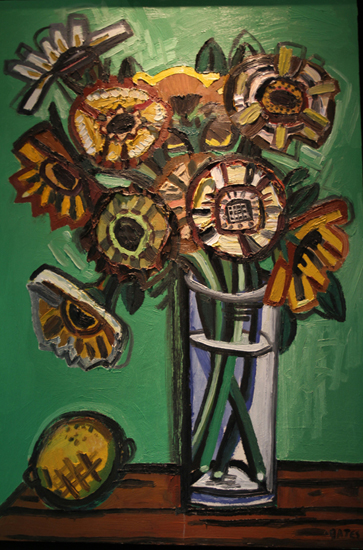
Rick Janecek’s door pulls have a lineage to the 19th century furniture pulls but they convey 21st century modernity because they are simpler, bolder, larger and more vibrant.
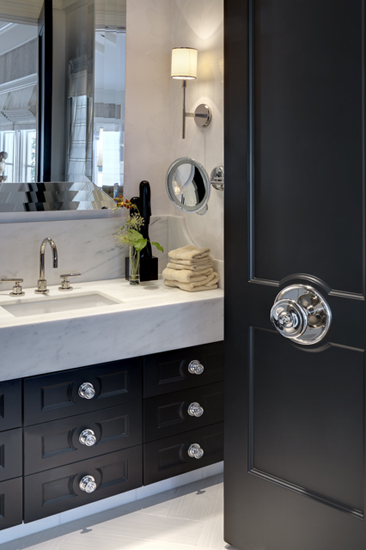
Modern Design Began as Early as the 18th Century
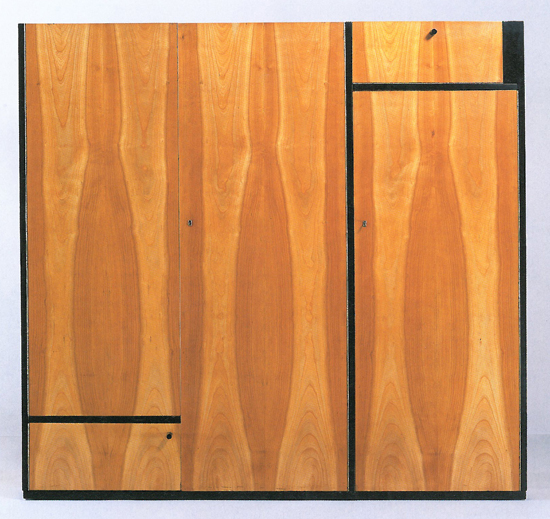
Marcel Breuer Wardrobe
Image courtesy of Neue Galerie New York
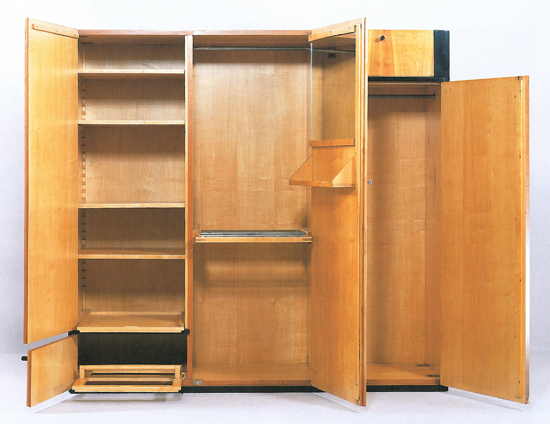
Marcel Breuer Wardrobe
Image courtesy of Neue Galerie New York
As early as the 1770s, King Gustav of Sweden was working with designers to strip down ornamentation of the opulent furnishings seen at Versailles. The English stripped-down version of furniture became the Regency period. The radical simplicity of the Austrian Empire became known as Beidermier Style, an important evolution of the modern movement. In Vienna, architect Otto Wagner was the father of Modernism. His design integrated the internal structures and external decoration in a logical self-explanatory unity. At the Neue Galerie the Wagner designed cabinet stands across the room from a Marcel Breuer designed cabinet from the latter and more austere Bauhaus school. The Vienna Secessionists addressed the international influences of modernity from British arts and crafts to the French Post Impressionists, Belgian Symbolists and the art of Japan as they brought their artistic contribution. Combined with traditional formal interiors, it became Art Deco and then Art Moderne and then with less formality, midcentury modern ranch houses.
New Technology and Greater Portfolio of Materials Allow Flowing Forms and Organic Shapes
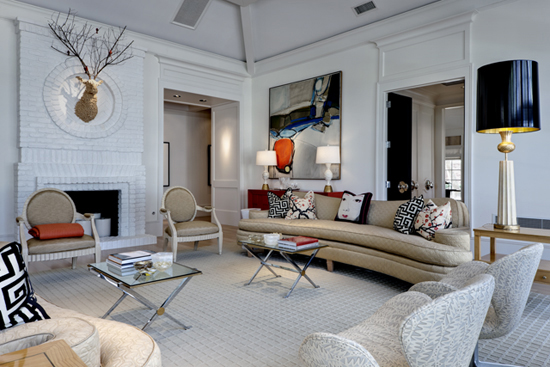
An increased interest in the environment provokes green architecture and a return to more organic materials. Modern architecture can express itself inexpensively as architecture for humanity, creating affordable shelter or sumptuous modern estate homes.
Rick Janecek’s Approach Adds to a Major Design Movement, New Traditional, with Roots in Brussels

New Traditional embraces the past with a modernist eye of simplicity, authenticity, and honesty of materials and space. The evolution of modern design is kept vibrant by the competing forms of reductionism and the exploration of art in the architectural structured design.
